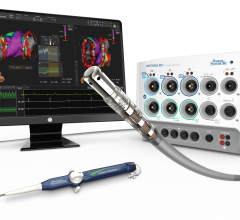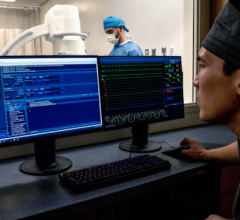March 22, 2011 - Further enhancing its cardiovascular reporting capabilities, Fujifilm Medical Systems Inc. added its Intelligent Structured Reporting (ISR) technology, an advanced software decision support system.
March 22, 2011 – During complex interventional procedures, it is challenging to accurately navigate and interpret the vascular anatomy for precise device deployment. To aid physicians during such interventions, Toshiba America Medical Systems Inc. introduced Volume Navigation 3-D roadmapping for the Infinix-i vascular X-ray product line.
March 22, 2011 - Terumo Cardiovascular Systems (CVS) said it agreed to the terms of a consent decree with the U.S. Food and Drug Administration (FDA) regarding quality system improvements at the company's Ann Arbor, Mich., facility. The agreement will be subject to the approval of the United States District Court for the Eastern District of Michigan.
Providing exceptional cardiovascular care for patients to achieve the best possible outcomes is the number one goal for ...
March 21, 2011 - Researchers have shown for the first time that stem cells injected into enlarged hearts reduced heart size, reduced scar tissue and improved function to injured heart areas, according to a small trial published in Circulation Research: Journal of the American Heart Association.
March 21, 2011 - OrbusNeich today announced it filed a lawsuit in the Netherlands against a doctor and principal investigator of a trial examining OrbusNeich's Genous coronary stent.
March 21, 2011 - A pilot study in healthy children and adolescents shows that it is feasible to screen for undiagnosed heart conditions that increase the risk of sudden cardiac arrest (SCA). Adding a 10-minute electrocardiogram (ECG) to a history and physical examination identified unsuspected cases of potentially serious heart conditions.
Cardiac positron emission tomography (PET) is growing in popularity among cardiologists because it provides the ability ...

For more than 20 years, radiation oncologists have emphasized the importance of radiation-tolerant heart rhythm devices for use in patients who require cardiovascular regulation. In the last three years, interest has increased, as medical physicists responded to the U.S. Food and Drug Administration (FDA) to promote investigational research.

With the increased use of transradial cardiac catheterization throughout hospitals across the country, several results have become apparent. Transradial catheterization has been shown to have fewer bleeding complications, faster recovery time and improved patient satisfaction. It also offers a unique opportunity to improve resource utilization.
Transradial Approach (Left vs. Right) and Procedural Times During Coronary Procedures: TALENT study Alessandro Sciahbasi, et al. American Heart Journal, 2011, 161: 172-9 Study design: Prospective, randomized 1,467 patients (Jan. 2009-Dec. 2009) to right radial approach (RRA) or left radial approach (LRA).
When performing radiofrequency (RF) ablation to treat cardiac arrhythmia, medical professionals must balance the safety ...

Radial artery occlusion rate during transradial access procedures is strongly related to sheath and catheter size. Although worldwide most experienced practitioners (90 percent) use 5 and 6 French systems(1), high-quality coronary artery opacification can be obtained with 4 French systems.

Heart disease remains the number one killer of both men and women in the United States, with ST elevation myocardial infarction (STEMI) remaining one of the most feared manifestations. The underlying mechanism of a STEMI is plaque rupture and subsequent thrombosis of a coronary artery, causing subsequent myocardial ischemia, which progresses on to myocardial necrosis and infarction.

Tiny guide wires are designed to navigate vessels to reach a lesion or vessel segment. Once the tip of the device arrives at its destination, it acts as a guide that larger catheters can rapidly follow for easier delivery to the treatment site.
Change Healthcare Cardiology Hemodynamics is an integrated hemodynamic monitoring system for monitoring vital signs and ...

Two big advances in cardiac advanced visualization software were highlighted in December at the 2010 Radiological Society of North America (RSNA) meeting in Chicago. TeraRecon highlighted a computer-aided detection (CAD) software module to detect coronary artery stenosis.

Converting from paper-based electrocardiogram (ECG) files and reports to an electronic record system, or switching to a new electronic system, can improve workflow efficiency and speed the process of getting patients their test results. However, as with most health IT solutions, experts say there are no “out of the box” solutions, and every system will have interoperability bumps in the road.

Over the last 10 years, hospitals have phased out analog image intensifiers for flat-panel, digital detector angiography systems in their cath labs. As hospitals look to purchase current-generation digital angiography systems, buyers should be aware of several new technologies. Better Navigation Aids


 March 22, 2011
March 22, 2011




